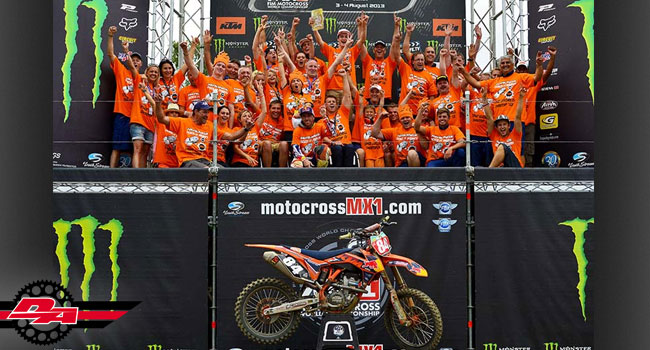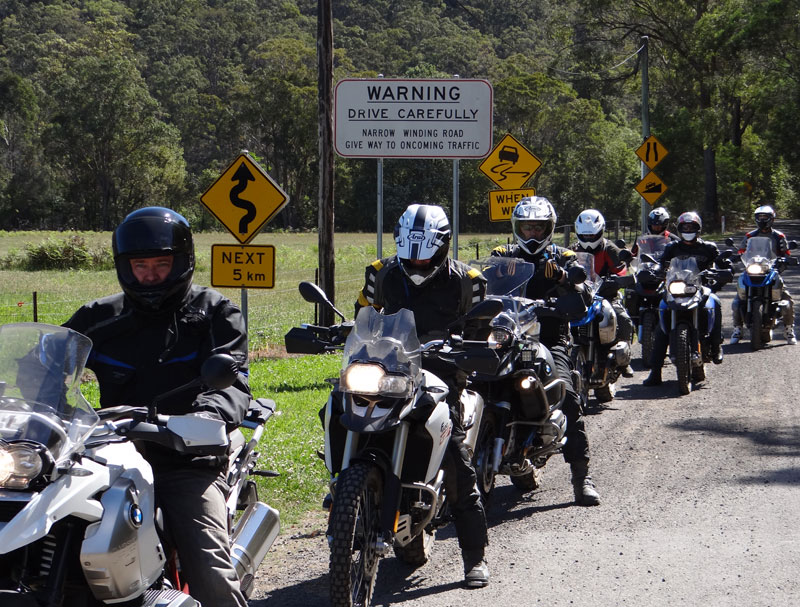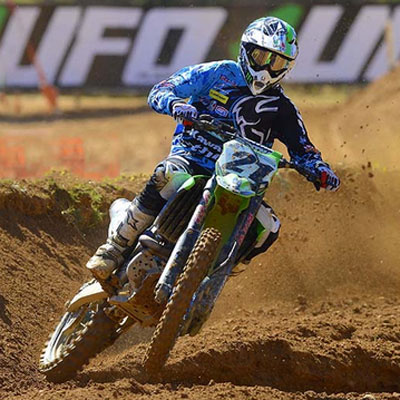
The DIRT ACTION test monkeys venture to the mighty Appin motocross complex to test Kawasaki’s 2012 KX450F
STORY BY SCOTT BISHOP | PHOTOGRAPHY BY MATT BERNARD
As Chevy Chase once said in Fletch Lives, “It’s all electronics these days.” And Kawasaki was listening as the 2012 KX450F has a range of electronic gizmos and handy gadgets that would make NASA proud. In the very same movie he also said, “It’s all ball bearings these days.” And he was right. Sometimes the simple things done well are the best things and that is certainly the case with the new 2012 KX450F.
Some things have changed at Kawasaki Australia in the past two years. After years of almost being a silent partner in the Australian motorcycle industry, suddenly there is some enthusiasm and life about the place and a real interest in off-road bikes.
The larger investment in their race team, internal staff and corporate suit wearers at events and model launches like those for the 2012 KX450F and last year’s KX250F are all examples of Kawasaki Australia being proactive in the marketplace. Whether it’s the injection of new staff, the addition of Monster Energy, the release of cutting-edge models or a combination of all three is irrelevant, as we at DIRT ACTION think it was about time Kawasaki sprang to life and we’re glad the company again has some zest for dirtbikes.
Last year, Kawasaki launched an all-new KX250F to rave reviews around the world. It came at a time when the GFC put the clamps on several projects for many companies but obviously, Kawasaki felt the model was too good to withhold and launched it with plenty of pomp and pageantry.
Now it’s the KX450F’s turn. Despite going FI in 2009 and undergoing the makeover that accompanies such a big change, just two seasons later Kawasaki has introduced the 2012 model with its up-to-the-minute electronics and launched it in front of a big media contingent at Appin Raceway in Sydney.
HISTORY
The KX450F hit the streets in 2006 with mixed reviews. It was good without being great and had the usual teething issues that face a new model. The four-speed box was not well suited to Australian conditions and the donk didn’t quite have the muscle in the right places, plus the suspension was a tad out.
A year in the real world and the bike progressed significantly. Power was upped, almost to the top of the class. A fifth gear was added and it was more rideable right out of the box. The 2009 model saw the carby round filed for fuel injection. The brutal power of past models was replaced with a soft bottom and gave the power a real hit in the mid-range that was difficult to control. Most riders filled in the bottom to make the power seamless in the transition from bottom to mid by tweaking the fuel injection and ignition mapping.
Kawasaki then did the work for the 2010 model and the bike sat right alongside the powerhouse KTM 450SX as the king of the track. It was a long, strong spread of power that just didn’t know when to quit and made rapid-fire rpm thanks to the fuel injection. 2011 was a year of fine-tuning and now 2012 sees Kawasaki again throwing more technology at the KX450F.
THE CHANGES
The handlebar mounted launch control is a first for a production bike but has been used and tested in the AMA, in a variety of designs, for a few years. The idea is to control rear wheelspin from the startline by using a specially designed start mapping curve. Then the bike will return to its normal track settings once you have shifted gear. Kawasaki has likened it to a holeshot button on your handlebar.
Kawasaki will also offer three interchangeable ignition map plugs for fine-tuning the mapping to suit track conditions. The stock one can now be swapped for a hard-pack plug for when conditions are slippery and traction is vital, or a soft track for when the power can be that bit more aggressive as the surface can handle the extra horsepower.
The chassis and suspension also got plenty of attention on the new model as the triple clamps now come with four-way adjustability that allows riders to fine-tune the ergonomics. Adding to that are the new adjustable footpeg mounts that have up to 10mm of movement. The forks are now coated in DLC to reduce stiction and the front brake rotor also gets an upgrade.
Maybe the biggest change, though, is the reduction in width of the frame by 4mm. The KX has always felt like a bulky bike and while 4mm doesn’t seem like a lot, it is enough, especially when combined with the new triple clamps and peg mounts to completely modernise the feel of the bike.
THE LAUNCH
Those 6am flights are the worst: the 4am wake-up, jostling for carparks in the long-term, $100/hour airport carparks, $12 toasted sandwiches and $6 orange juices are just plain outrageous.
Rolling into Appin in the Bernard Mobile, the Kawie boys had put some time into the venue to make it look the part. The race team rig was set up in all its glory with a fleet of 2012 model KX450Fs housed under the awning. The track looked in top shape and the Kawasaki bunting was in place.
A brief rundown on the new model was given and then it was time to spend some quality time with the pride of the KXF fleet before stepping back onto the steel bird and heading for home. Yes, there are worse ways to spend a lazy old Monday.
TIME TO RIDE
What do the new updates do for the bike?
Let’s work our way through the new list of features on the 2012 model and break them down individually.
1. Launch control. I tried a few starts with it off and a few starts with it on and it really didn’t have a great effect on the traction or wheelspin out of the gate. Sure, there is some difference at the throttle but the reality is it won’t make or break your holeshotting ability. For me, the actual holeshot button is a better tool than an ignition curve change for gaining consistently good starts.
2. Mapping plugs. In a back-to-back session, we ran through all three plugs available to test them, then another final run on the standard setting. The soft track or more aggressive plug didn’t alter the power much at all and we struggled to feel any significant change in power delivery. We then resorted to the hard-pack plug and the change was far more noticeable. It mellowed the power from throttle response all the way through to the high rpm. On the track, roll-on response was flatter, so we hammered the clutch more and it gave the bike a mild-mannered and somewhat trailbike feel.
There were sections of the track where we felt this style of power worked but we wouldn’t use it often. Maybe it’s a rap on the quality of the standard power and its delivery as we found that to be the best over the course of the day than the option plugs and settings.
3. New ergos. You only really touch the bike in four spots — grips and pegs — so if one of those areas feels out of whack for you, the entire bike can be uncomfortable. The four-way clamps now give the production bike room to move as the bars can be placed in different locations to suit the rider. It’s not rocket science but it is a handy tool.
The new footpeg mounts allow about 10mm of movement and, while that doesn’t sound like much, it is instantly noticeable. Standard position is up but dropping them to the alternate position does create room in the ergo layout of the bike. Again, not ground-breaking but very handy. Just don’t forget to adjust your shift lever and rear brake pedal accordingly.
4. Slimmer frame. The KXF was never a porker but it did have a big feel about it. KXF riders never mentioned it but riders coming from other brands always commented on the girth of the bike. With the frame narrower, albeit only 4mm, no one described the bike as bulky. It is a change for the better.
So, what does it go like?
Kawasaki has always produced a powerful motor. So the past few seasons have always been less about outright horsepower and more about a power spread that all riders can utilise and enjoy. The power delivery of the 2012 is as good as it has got from Kawasaki. The KXF combines good throttle response with a sharp and ample bottom end, a mid-range spread that hauls and top end that doesn’t fall flat like other FI bikes have. Add to that a good dose of torque through the range and you have an engine that is as impressive as it is fast. We are fans of this engine.
What are the advantages over the 2011 model?
In terms of outright power, very little. But factor in tuneabilty, a more seamless delivery and some more over-rev and you have enough evidence to say it’s a step above the 2011 donk.
Would we change anything on the engine?
Every guru will tell you that every production bike needs an exhaust. That isn’t the case with the Kawasaki. The stock exhaust emits a good note, gives the bike plenty of power and meets most noise tests. If you must throw an exhaust on it, ensure that it’s for a 2012 unit as, while the older ones will bolt up, the new 115db Max test adopted by the AMA and FIM may mean your old one won’t pass a noise test.
What are the new ergos like?
With a higher, flatter seat, the ergo layout is a bit more modern than previous KXFs. The old KXF had a sit-in feel, while the new bike offers more of an aggressive sit-on arrangement. Combine that with the multi-adjust clamps and footpegs and, if you don’t get an ergo layout to your liking on this KXF, you never will. Our final setting on the day was footpegs low, bars central and clamps in the rear position.
Does it handle?
Let’s start off by saying the bikes prepared for us at the launch all had the forks push through the clamps about 10mm. We aren’t sure if this was standard or just the setup Kawasaki used for the day and the track. That said, the new bike added some agility to its bag of tricks in 2012. Kawies have always had a reputation of being stable bikes and neutral turners, but the new bike turns faster and offers more front-wheel bite than previous models.
The slimmer frame and new ergo layout must also receive some of the kudos for the sharper steering manners. The bike in general has a lighter feel about it and, with the new seating position, the rider can toss it into turns with a little more authority.
What about the suspension?
Not much to complain about here, either. The coatings on the fork will mean nothing on the track as stiction is never a complaint of the common rider. The fork action is good and, while Boothy and I bottomed it out doing our Robbie Maddison impression in the longest jump contests, the impact was tolerable and controlled.
The shock also produced the goods and worked well in combination with the fork. My complaint about previous KX450Fs was that you either had it working great or it felt very average. There was a small window to get the bike working right. For 2012, that window is now a door and the setup doesn’t need to be as precise to get good performance. We simply set the ride height to 100mm, dialed up a clicker or two and then went out and carved up Dean Ferris.
Is there anything else I should know?
The front brake seemed a tad stronger this year. The rotor has been updated so that may be the reason but it’s the first time I can recall using only one finger on the front brake all day.
The bike takes in air from under the seat via huge holes in the side plates. This air flow is great for dry days but may be something to watch if there’s a lot of standing water on the track on those muddy days.
Clutch pull is light when new, but as the clutch lever is short, I can see it getting heavy over time. Update the cable regularly and also look at getting a slightly longer lever if the pull remains too much for your puny arms.
What’s the deal?
A musician will often say that if a song sounds terrible when played in its rawest form, like on an acoustic guitar, then no amount of technology will make it a good song. Same with dirtbikes. If the basic design and function of the chassis, suspension and engine isn’t up to scratch, no amount of sales gimmickry will make it a good bike.
Fortunately for Kawasaki, the design and performance of the major components of the bike are very good and, as a result, the 2012 KX450F is a great dirtbike. Take away the launch control, the plug and play mapping and the other headline-grabbing features and you are still left with a high-horsepower, good-handling and easy-to-use 450cc race bike.
There is no doubt it is a better bike than the 2011 model and, with the adjustability in the ergos, suspension and motor, there is now something for everyone. It’s a better bike for a wider audience.
SECOND OPINIONS
Shane Booth-
I’ve always been a bit of fan of the bike and after hearing about the changes that had been made for 2012 I was keen to get out on the track. It is noticeably slimmer than last year’s machine, which gives it a more nimble feel. I still find it one of the roomier bikes in this class, with good footpeg, seat and handlebar spacing. The ability to adjust the footpeg height is something I think riders will appreciate, so if you purchase a new KX450F, change the heights and try it out; it’s more than noticeable. A smooth, strong power delivery awaits and with more adjustability than ever you can mellow it out or beef it up from standard — it’s as simple as changing a plug. It’s a confident-feeling bike with plenty of adjustability, allowing you to set it up to your liking and placing it high my list for the 450 class.
Matt Bernard-
Matt put some laps in on the KX450F at the launch but, instead of getting his opinion (which is a good one), we decided to wait until next issue. Kawasaki has allowed Matt to take on a 2012 KX450F project bike so he can go into much more detail throughout the year. Stay tuned for that.
VITAL STATS:
Engine: 449CC DOHC single-cylinder four-stroke
Bore x stroke: 96mm x 62.1
Fuel system: Digital EFI via 43mm Keihin throttle body
Transmission: Five-speed
Fork: 48mm KYB with AOS
Shock: KYB on Unitrak linkage
Weight: 113kg (claimed)
Price: $11,999 RRP






